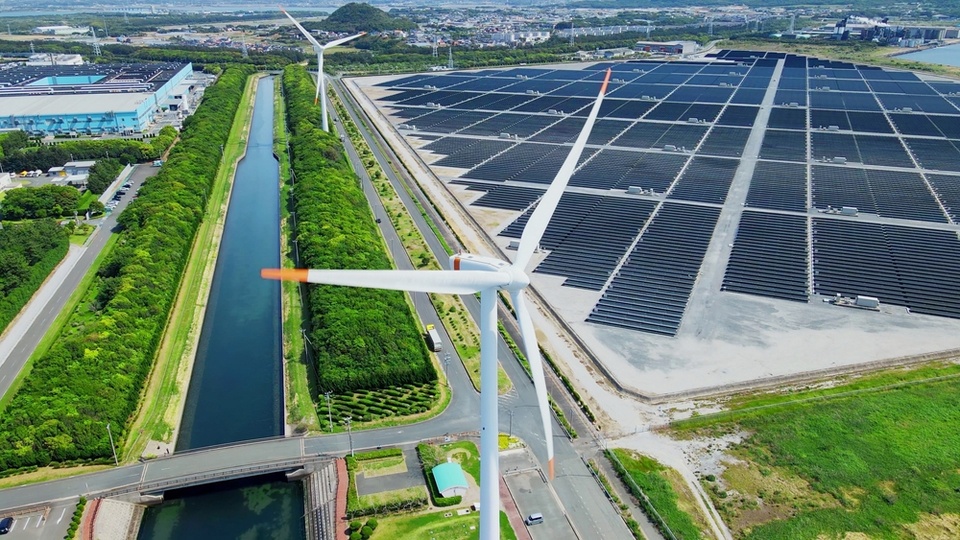Impact investing: why it’s playing a more important role in experienced investors’ portfolios than ever before
More than a decade on since the term “impact investing” was first officially coined, the investment style has seen its popularity grow year-on-year as more investors realign their portfolio to contribute to positive social and environmental impacts whilst targeting positive returns.
Transitioning from a niche investment branch to a mainstream multi-trillion pound industry over the course of the last 14 years, impact investing has fuelled the rise of a new wave of high-growth environmental, social and governmental (ESG) innovations of whose importance have been highlighted especially off the back of the pandemic.
From fuelling contactless digital ordering platforms like Qikserve that supported thousands of UK hospitality branches throughout the pandemic, to providing sustainable modular housebuilders like CoreHaus with the capital they require to grow, the increasingly positive value impact investing has had on industries and communities over the last few years has been undeniable.
Though this growing value that impact investing drives across multiple facets of UK society is something that has been well-documented over recent years, the simultaneous benefits doing so can provide for experienced investors and their portfolios can not be underplayed.
Impact investing has been brought to the mainstream
No longer a niche buzzword angled towards solely philanthropic investors with the desire to rejuvenate the environment or tackle humanitarian crises, in recent years impact investing has been associated with a more practical, broad focus of generating a measurable, beneficial social or environmental impact alongside a financial return.
This growing realisation of impact investing’s limits and potential for mutual benefit saw its market reach between $715 billion and $2.1 trillion in assets under management in 2020, just a few years after the investment style also became recognised as one of the UN’s key Sustainable Development Goals (SDGs) for the future.
Not only has this journey to the mainstream made impact investing ever-more accessible to the experienced investor, but it has merited the possibility of “doing well by doing good” on a much larger scale.
Opportunities to become an impact investor are more numerous than ever before
As previously hinted, the evolution of impact investing has gone a long way to opening up the varying pathways investors see exist within its sphere today.
Available across a host of industries existing and suitable for a range of different investor portfolios, the opportunity for investors to benefit from impact investing has never been so apparent - the Harvard Business Review’s 5 Ps of Impact Investing aptly outlining the diverse nature of the practice that makes it appropriate for so many investors’ goals today.
Whether it is in the form of an innovative SME lender transforming small business loan delivery, an employee-first human resources platform championing engagement and voice, or even an electric vehicle manufacturer propagating green energy in transport, it’s clear to see the possibilities for impact investing in modern business have expanded exponentially.
With a 2020 report by Global Impact Investor Network (GIIN) showing 87% of investors surveyed considered impact investing ‘central to their mission’, this expansion has not just offered many investors a lucrative lifeline for portfolio diversification, but has further merited the importance of impact investing both on an individual and society-wide scale.
Impact investments are providing market-rate returns (and often higher)
The “trade off myth” that investors must choose between either positive impact or financial returns has long been quelled, with research suggesting that right now impact investments can perform as well as - and in some cases better than - conventional investments.
A meta-study conducted by Friede, Busch and Bassen published in The Journal of Sustainable Finance in 2015 showed that out of the 2,200 pieces of historical investment data that was analysed, more than 90% suggested that ESG factors had a positive or neutral impact on investor returns.
What's more, data collected more recently in 2019 by Morgan Stanley reinforced this relationship, concluding its findings by stating “sustainable funds provided returns in line with comparable traditional funds while reducing downside risk” adding that in periods of extreme volatility “strong statistical evidence” suggested sustainable funds were more stable.
Not only does the industry data suggest why impact investing can play an important role in maintaining or even increasing potential returns, but also that in some cases it can act as a safety net for other investments should market volatility increase.
Just one example of this theory in practice could be noticed in 2020, when the UK deep tech sector generated record VC investment exceeding £2.3bn - primarily instigated by technological reactions to Covid-19 in an otherwise considerably volatile market period.
Offering a combination of positive impact, potentially considerable returns and in some cases an element of downside risk limitation, it’s not difficult to see why impact investing has soared in popularity over recent years.
Impact investments can come with a host of generous tax benefits
For investors based within the UK, a wide range of tax benefits can frequently be taken advantage of when impact investing, often coming as an added incentive to the positive target returns and beneficial wider missions impact investments seek to achieve.
Naturally, it’s within the government’s best interests to encourage promising early stage businesses to develop innovative, disruptive and even transformative technologies which quite often translate into impact investments. And so to bridge this gap, tax efficient investment opportunities are quite often the chosen method.
Whether it be international threat intelligence provider Intelligence Fusion who offer valuable security insights to protect businesses around the globe, or GCV ourselves who have contributed to the production of over 500 quality regional jobs since 2015, a long list of high growth, impact driven companies have flourished as a result of government-led tax efficient investing schemes such as the Enterprise Investment Scheme (EIS).
The EIS in particular, introduced in 1994 as a way of stimulating the UK’s innovative SME landscape, incentivises private investors to invest growth capital into promising early-stage companies in return for an equity stake and some of the most generous tax advantages available across UK venture capital.
Offering investors the chance to generate potentially significant money-on-money returns upon exit whilst receiving up to 30% income tax relief, capital gains tax exemption, inheritance tax exemption and more, the EIS is just one example of the tax efficient investment schemes that can play an important role in minimising the risk and maximising the returns of an experienced investor’s impact investment portfolio.
Furthermore, not only does the EIS give experienced investors a platform to benefit from a plethora of potentially lucrative advantages, but it can also serve as an effective vehicle for maximising impact investments.
Allowing investors the opportunity to pledge up to £2 million into knowledge intensive companies (KICs) and giving those companies themselves the option to raise up to a total of £10m in EIS funding, both figures represent double the maximum permitted for non-KICs.
This incentive, aimed at motivating both investor and investee to contribute to impact-driven purposes, offers the perfect platform for long term positive investments to be made, further validating just how important impact investing can be to every stakeholder.
Identifying an impact investment that suits your portfolio
Whether your impact efforts are angled toward early-stage venture capital tech investments or more mature, private equity deals, identifying impact investments that best suit your investment strategy plays a crucial role in optimising a portfolio for growth and impact.
Identifying the risks and returns associated with different impact investments can be a key starting point for any investor looking to diversify their portfolio in the field, largely due to the broad range of missions, sectors and growth goals opportunities can be centred around.
Where some investors may opt for more cause-driven, potentially less profit intensive impact investments such as green bonds or instead may prefer more incremental, steady private equity investments into large-scale impact-oriented firms, for those striving for the high target growth early-stage impact investments - opting for tools like the EIS may be favourable.
But regardless of portfolio type, investment preferences or growth goals, it’s clear to see why now more than ever impact investments are playing an important role in a growing number of experienced investors’ portfolios, and - as finance and impact feedback from impact investors grows year-on-year - this trend shows no sign of slowing.
%20(3)%20(2).jpg)









